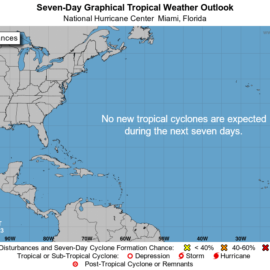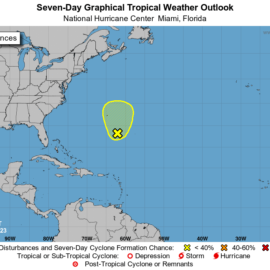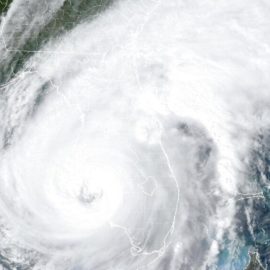
There is a formation off Africa that is being watched but not expected to develop.
A disturbance in the Atlantic Ocean near the coast of Africa has little chance of developing into a tropical storm, the National Hurricane Center said Monday morning. Forecasters say disorganized showers and thunderstorms between the Azores and Canary islands are associated with an area of low pressure that has a 10% chance of formation in the next two to seven days. While forecasters say the system could develop some subtropical characteristics during the next couple of days as it moves slowly northeastward, its contact with cooler waters later this week are expected to end its chances of development. The system is not expected to impact the coast of Louisiana.
nola.com

In fact, today’s image from the NHC does not show it, but only the one from yesterday.
The return of El Niño could bring a wetter second half of the year to Louisiana and a reduced risk of hurricanes. The National Oceanic and Atmospheric Association’s Climate Prediction Center announced March 9 that La Niña, which usually causes more hurricanes to form in the Atlantic, was officially over after an unusually long three years. El Niño and its sister La Niña are part of the El Niño-Southern Oscillation cycle, a set of conditions over the Pacific Ocean that affects weather patterns across the world. In Louisiana, the biggest effects involve hurricane season in the Atlantic Ocean. Regardless, this year’s first cyclone hit in January, according to National Hurricane Center forecasters, long before the official start of hurricane season. Hurricane specialists recently reassessed an area of low pressure that formed in off the northeastern coast of the U.S. in mid-January, a standard procedure for the Hurricane Center, and designated it a subtropical storm. It’s not unusual for storms to form before June, according to the National Hurricane Center. The first tropical storm to form in the Atlantic this year was named Arlene, reaching wind speeds of 40 mph on June 2 as it headed for Cuba. Arlene will be followed by Bret, Cindy, Don and Emily. Here’s the full list of this year’s storm names.
Activity but not something to worry about – yet. Sunday, 04 June, I mentioned my father’s service in the Pacific Theater. I confused that with D-Day, which is today. 04 June 1969 I was commissioned an ensign in the Coast Guard.



